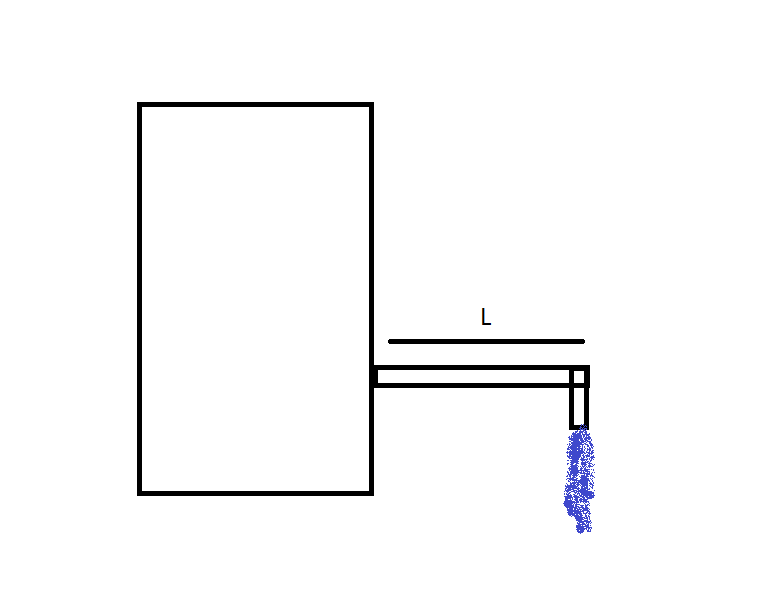Consider the problem wherein we are told to find out the force of reaction of water flowing out of a vessel through an orifice. I attempt to compare it with a shotgun and a bullet as a conservation of momentum of the system. Another approach is Newton's third law that is inextricably related to momentum conservation. However, I can't picture what forces are interacting: how or in what directions. If there were no friction on the floor, would the vessel be pushed in the opposite direction of the water?
There's a second problem about figuring out the reaction moment of water flowing out of a tube, I think the tube's wall interacts with water; what other interactions would there be? Aren't those forces applied in all directions? Do the forces cancel each other or not? Here's a picture of what I think. I learnt a way to calculate the resultant force in this case using linear momentum, but I would like to know the direction of the net force, not only its modulus.
Here's the problem picture
Finally, there's a problem about finding out the horizontal force that tends to pull the tube out of the tank. I think the forces interacting should be the same as above with the difference that forces are acting on the tube this time, but it's kind of difficult to picture a resultant force since they appear to cancel each other. Ignoring what I just wrote, since the orifice is small we can assume pressure is the same in all the points of it (that's my idea), so:
$$ dF = ds P $$
I still can not locate the force. Here's the picture of the problem:




